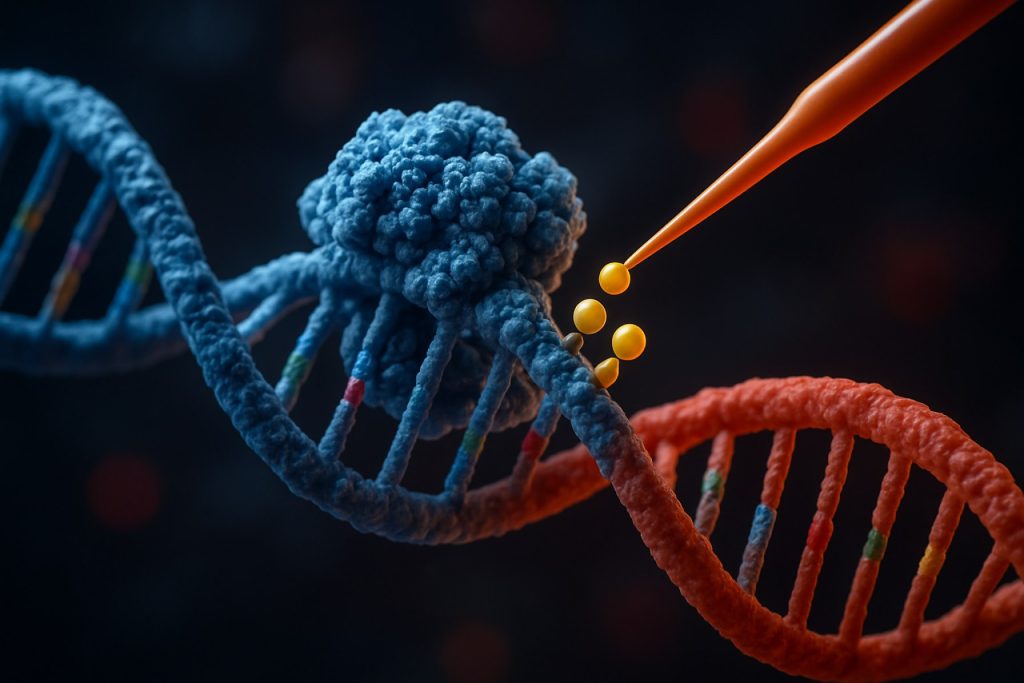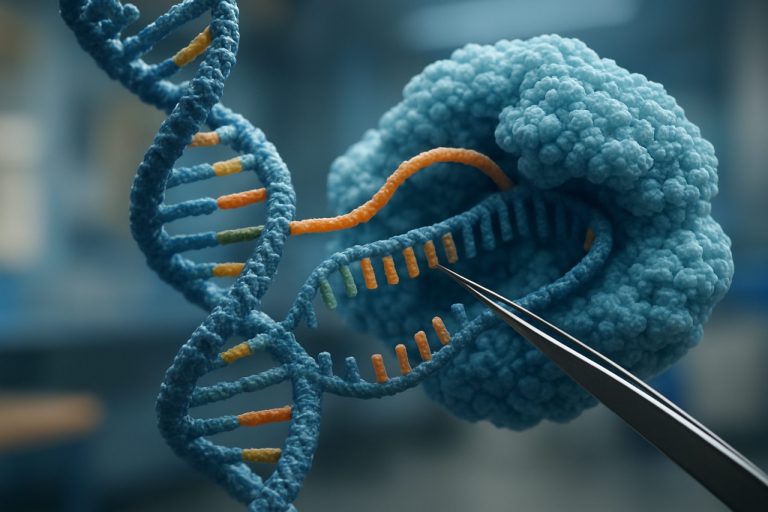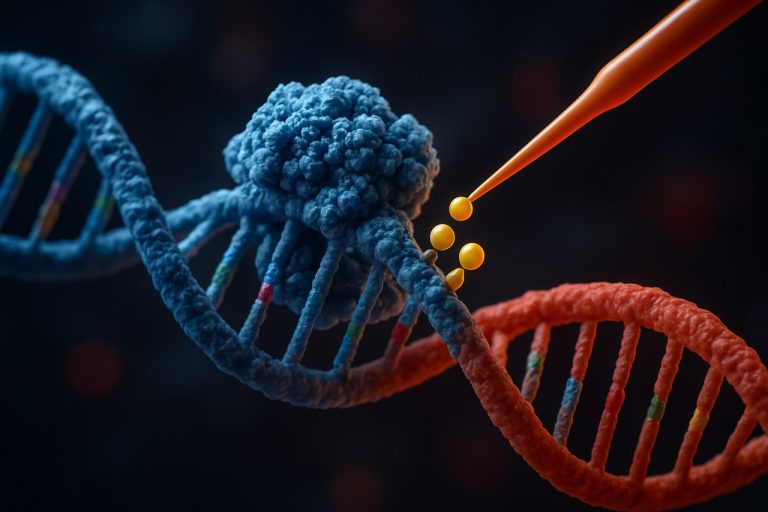
Unlocking the Power of CRISPR-Based Epigenetic Editing: Transforming How We Control Gene Expression. Discover the Next Frontier in Precision Medicine and Biotechnology.
- Introduction to CRISPR-Based Epigenetic Editing
- Mechanisms: How CRISPR Modifies the Epigenome
- Key Tools and Technologies in Epigenetic Editing
- Applications in Disease Research and Therapy
- Advantages Over Traditional Gene Editing
- Challenges and Limitations
- Ethical and Regulatory Considerations
- Future Directions and Emerging Trends
- Sources & References
Introduction to CRISPR-Based Epigenetic Editing
CRISPR-based epigenetic editing is an innovative approach that leverages the precision of CRISPR (Clustered Regularly Interspaced Short Palindromic Repeats) technology to modulate gene expression without altering the underlying DNA sequence. Unlike traditional genome editing, which introduces permanent genetic changes, epigenetic editing targets the chemical modifications—such as DNA methylation and histone modification—that regulate gene activity. This is achieved by fusing catalytically inactive CRISPR-associated proteins (such as dCas9) with effector domains capable of adding or removing epigenetic marks at specific genomic loci. The result is a reversible and highly targeted method for controlling gene function, offering significant advantages for both basic research and therapeutic applications.
The development of CRISPR-based epigenetic editing tools has opened new avenues for dissecting the complex regulatory networks that govern cellular identity, development, and disease. By enabling precise manipulation of epigenetic states, researchers can investigate the causal relationships between epigenetic modifications and gene expression, as well as their roles in processes such as differentiation, reprogramming, and tumorigenesis. Furthermore, this technology holds promise for the treatment of diseases driven by aberrant epigenetic regulation, including certain cancers and neurological disorders, by restoring normal gene expression patterns without introducing permanent genetic changes. As the field advances, ongoing improvements in specificity, efficiency, and delivery methods are expected to further expand the potential of CRISPR-based epigenetic editing in both research and clinical settings (Nature Reviews Genetics; Cell).
Mechanisms: How CRISPR Modifies the Epigenome
CRISPR-based epigenetic editing leverages the programmable DNA-targeting capability of the CRISPR-Cas system to modulate gene expression without altering the underlying DNA sequence. The core mechanism involves a catalytically inactive Cas9 protein (dCas9), which is guided to specific genomic loci by a single-guide RNA (sgRNA). Unlike traditional CRISPR-Cas9, which induces double-strand breaks, dCas9 serves as a DNA-binding platform to recruit epigenetic effector domains to targeted sites. These effectors can include DNA methyltransferases, histone acetyltransferases, demethylases, or other chromatin-modifying enzymes, enabling precise control over epigenetic marks such as DNA methylation and histone modifications Nature Reviews Genetics.
For example, fusing dCas9 to the catalytic domain of the histone acetyltransferase p300 allows for locus-specific histone acetylation, which generally promotes gene activation. Conversely, coupling dCas9 to the Krüppel-associated box (KRAB) repressor domain can induce heterochromatin formation and gene silencing. Similarly, dCas9-DNMT3A fusions can deposit DNA methylation at targeted promoters, leading to stable transcriptional repression Cell. The modularity of this system enables multiplexed editing, where multiple epigenetic marks can be manipulated simultaneously at different genomic locations.
Importantly, these modifications are often reversible and do not introduce permanent genetic changes, making CRISPR-based epigenetic editing a powerful tool for dissecting gene regulatory networks and exploring therapeutic interventions for diseases with an epigenetic basis Nature Biotechnology.
Key Tools and Technologies in Epigenetic Editing
CRISPR-based epigenetic editing leverages the precision of CRISPR/Cas systems to modulate gene expression without altering the underlying DNA sequence. The core technology involves a catalytically inactive Cas9 protein (dCas9) fused to various effector domains that can add, remove, or recognize specific epigenetic marks. These fusion proteins are guided to target genomic loci by customizable single-guide RNAs (sgRNAs), enabling locus-specific modification of chromatin states.
Key tools in this field include dCas9 fused to transcriptional activators (such as VP64, p300, or SunTag systems) for gene activation, and repressors (like KRAB or LSD1) for gene silencing. For example, dCas9-p300 can acetylate histone H3 at lysine 27 (H3K27ac), promoting transcriptional activation, while dCas9-KRAB recruits repressive complexes to induce heterochromatin formation and gene silencing. Additionally, dCas9 can be linked to DNA methyltransferases (e.g., DNMT3A) or demethylases (e.g., TET1) to directly modify DNA methylation at specific loci, offering another layer of epigenetic control.
Recent advances have expanded the CRISPR toolbox to include base editors and epigenome editors with improved specificity and reduced off-target effects. Multiplexing strategies, where multiple sgRNAs are used simultaneously, allow for the coordinated regulation of gene networks. Delivery methods, such as viral vectors, nanoparticles, and ribonucleoprotein complexes, are also being optimized for efficient and safe application in both in vitro and in vivo settings Nature Reviews Genetics, Cell.
Applications in Disease Research and Therapy
CRISPR-based epigenetic editing has emerged as a transformative tool in disease research and therapeutic development, enabling precise modulation of gene expression without altering the underlying DNA sequence. By fusing catalytically inactive Cas9 (dCas9) with epigenetic modifiers—such as DNA methyltransferases, histone acetyltransferases, or demethylases—researchers can target specific genomic loci to activate or repress gene expression in a controlled manner. This approach has been instrumental in dissecting the functional roles of epigenetic marks in various diseases, including cancer, neurological disorders, and autoimmune conditions.
In cancer research, CRISPR-based epigenetic editing has been used to reactivate silenced tumor suppressor genes or suppress oncogenes by modifying histone marks or DNA methylation patterns, offering a potential avenue for targeted cancer therapy. For example, targeted demethylation of the p16INK4a promoter has been shown to restore its expression and inhibit tumor growth in preclinical models National Cancer Institute. In neurological diseases, such as Fragile X syndrome, epigenetic editing has enabled the reactivation of the silenced FMR1 gene, demonstrating the potential to reverse disease phenotypes at the molecular level National Institute of Neurological Disorders and Stroke.
Therapeutically, CRISPR-based epigenetic editing offers advantages over traditional gene editing by reducing the risk of off-target mutations and providing reversible, tunable control of gene expression. Ongoing clinical and preclinical studies are exploring its application in treating genetic disorders, metabolic diseases, and immune-related conditions ClinicalTrials.gov. As delivery methods and specificity improve, CRISPR-based epigenetic editing is poised to become a cornerstone of precision medicine.
Advantages Over Traditional Gene Editing
CRISPR-based epigenetic editing offers several advantages over traditional gene editing techniques, particularly in its ability to modulate gene expression without altering the underlying DNA sequence. Unlike conventional CRISPR-Cas9 systems that introduce double-stranded breaks to disrupt or replace genetic material, epigenetic editing employs catalytically inactive Cas9 (dCas9) fused to epigenetic modifiers, such as DNA methyltransferases or histone acetyltransferases. This approach enables precise, reversible, and tunable regulation of gene activity, reducing the risk of permanent off-target mutations and unintended genomic alterations Nature Reviews Genetics.
Another significant advantage is the potential for multiplexed and locus-specific control. Multiple genes or regulatory elements can be targeted simultaneously by designing guide RNAs for different loci, allowing for complex modulation of gene networks and pathways Cell. This is particularly valuable for studying polygenic traits and diseases where coordinated regulation of several genes is required.
Furthermore, CRISPR-based epigenetic editing is generally considered safer for therapeutic applications, as it avoids permanent changes to the genome and can be designed to have transient effects. This reversibility is crucial for minimizing long-term risks and for applications where temporary gene regulation is desired, such as in developmental studies or regenerative medicine Nature Biotechnology. Collectively, these advantages position CRISPR-based epigenetic editing as a powerful and flexible tool for both basic research and potential clinical interventions.
Challenges and Limitations
Despite its transformative potential, CRISPR-based epigenetic editing faces several significant challenges and limitations that currently restrict its widespread application. One major concern is the specificity of targeting. While CRISPR systems can be engineered to direct epigenetic modifiers to precise genomic loci, off-target effects remain a risk, potentially leading to unintended changes in gene expression or chromatin state elsewhere in the genome. These off-target modifications can have unpredictable biological consequences, especially in therapeutic contexts Nature Reviews Genetics.
Another limitation is the efficiency and durability of epigenetic modifications. Unlike permanent genetic edits, epigenetic changes are often reversible and may not be stably maintained through cell divisions, particularly in rapidly dividing cells. This transient nature can limit the long-term efficacy of CRISPR-based epigenetic therapies Cell. Additionally, the delivery of CRISPR epigenetic editors into target cells or tissues remains a technical hurdle, with current viral and non-viral delivery systems facing issues related to efficiency, immunogenicity, and scalability Nature Biotechnology.
Ethical and safety considerations also pose challenges. The potential for germline transmission of epigenetic changes, unintended ecological impacts, and the lack of comprehensive understanding of long-term effects all necessitate careful evaluation before clinical or environmental applications World Health Organization. Addressing these challenges will require advances in CRISPR technology, improved delivery methods, and robust regulatory frameworks.
Ethical and Regulatory Considerations
CRISPR-based epigenetic editing, which enables precise and reversible modifications of gene expression without altering the underlying DNA sequence, presents unique ethical and regulatory challenges. Unlike traditional gene editing, these approaches can modulate gene activity in a cell-type or temporally specific manner, raising questions about the long-term effects, reversibility, and potential for unintended consequences. Ethical concerns center on the possibility of off-target effects that could inadvertently silence or activate genes, potentially leading to unforeseen health risks or heritable changes if germline cells are affected. The distinction between therapeutic and enhancement applications further complicates the ethical landscape, as interventions intended to treat disease could also be used for non-therapeutic modifications, raising issues of equity, consent, and societal impact.
From a regulatory perspective, current frameworks are primarily designed for traditional gene editing and may not adequately address the nuances of epigenetic interventions. Regulatory agencies such as the U.S. Food and Drug Administration and the European Medicines Agency are actively evaluating how to adapt guidelines to ensure safety, efficacy, and ethical oversight for these emerging technologies. There is a growing consensus on the need for robust preclinical studies, transparent reporting, and long-term monitoring of individuals receiving epigenetic therapies. International collaboration and harmonization of standards are also critical, as the global nature of research and potential for cross-border applications necessitate coordinated oversight. Ongoing public engagement and dialogue are essential to address societal concerns and to guide the responsible development and deployment of CRISPR-based epigenetic editing technologies.
Future Directions and Emerging Trends
The future of CRISPR-based epigenetic editing is poised to revolutionize both basic research and therapeutic applications. One emerging trend is the development of more precise and multiplexed epigenetic editors, enabling simultaneous targeting of multiple genomic loci to modulate complex gene networks. Advances in engineered CRISPR systems, such as dCas9 fused to various epigenetic modifiers, are expanding the toolkit for reversible and tunable gene regulation without altering the underlying DNA sequence. This opens new avenues for dissecting the causal roles of epigenetic marks in development, disease, and cellular reprogramming.
Another promising direction is the integration of CRISPR-based epigenetic editing with single-cell and spatial genomics technologies. This combination allows researchers to map and manipulate epigenetic states in heterogeneous tissues with unprecedented resolution, facilitating the study of cell-type-specific gene regulation in health and disease. Additionally, the use of inducible and programmable systems is enhancing temporal control over epigenetic modifications, which is critical for studying dynamic biological processes.
Therapeutically, CRISPR-based epigenetic editing holds potential for treating diseases driven by aberrant gene expression, such as cancer, neurodegenerative disorders, and imprinting diseases. However, challenges remain, including improving delivery methods, minimizing off-target effects, and ensuring long-term safety and efficacy. Ongoing research is focused on developing next-generation delivery vehicles, such as viral vectors and nanoparticles, and refining specificity through engineered guide RNAs and high-fidelity Cas proteins.
As the field matures, ethical considerations and regulatory frameworks will play a crucial role in guiding clinical translation. Collaborative efforts between researchers, clinicians, and policymakers are essential to harness the full potential of CRISPR-based epigenetic editing while addressing societal concerns and ensuring responsible innovation Nature Reviews Genetics Cell.
Sources & References
- Nature Reviews Genetics
- National Cancer Institute
- ClinicalTrials.gov
- World Health Organization
- European Medicines Agency



